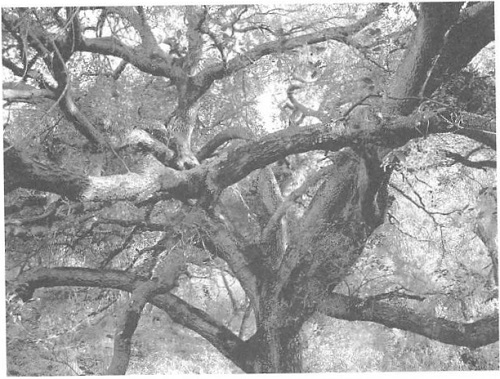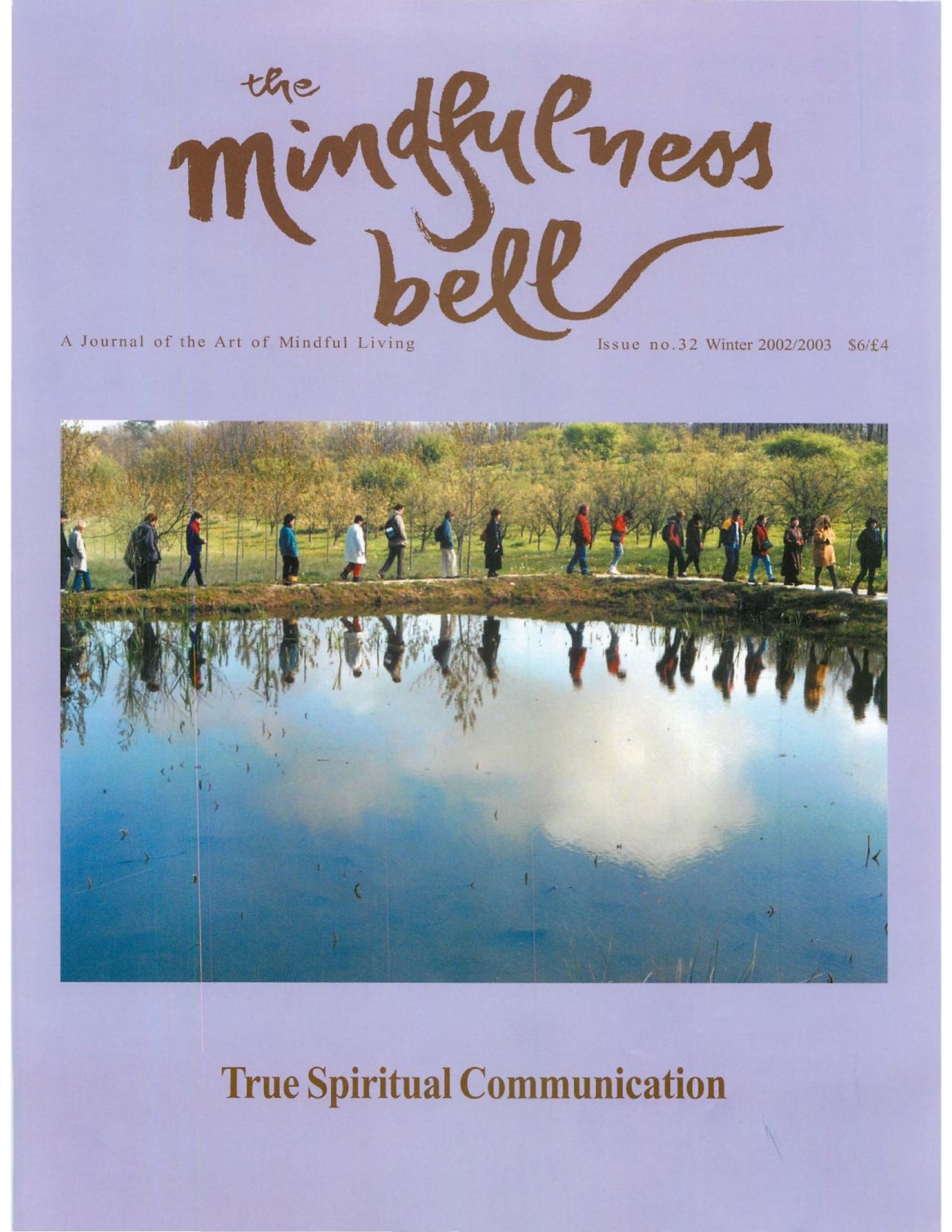By Sister Annabel Laity in December 2002
One morning when I woke up in Green Mountain Dharma Center I remembered a dream I had had which made me feel ill at ease. In that dream l had a serious difficulty with a sister, but in waking life I did not feel I had a difficulty with that sister. I pondered where the dream might have come from and remembered a meeting of the Sangha a few days before.
By Sister Annabel Laity in December 2002
One morning when I woke up in Green Mountain Dharma Center I remembered a dream I had had which made me feel ill at ease. In that dream l had a serious difficulty with a sister, but in waking life I did not feel I had a difficulty with that sister. I pondered where the dream might have come from and remembered a meeting of the Sangha a few days before. I had felt unhappy after that meeting. During the meeting the sister bad spoken quite vehemently about her wishes implying that the sisters should all comply. At the end of the day everything had been resolved to the satisfaction of everyone in the Sangha, or so l thought. I felt very light and content. However that sister who bad spoken so vehemently had not felt content and she had come to me in my dream to tell me so a few days later.

When I woke up from the dream, it was such a beautiful day but I felt so tired. I lay on my bed breathing and fortunately it was lazy day, the day with no schedule. The birds were singing wholeheartedly and I remembered the lines in the shorter Amitayus Sutra:
"Furthermore Shariputra, in Sukbavati you can always see different species of birds of many varied wonderful colors. Like the white crane, the peacock, the oriole, the egret, the kavalinkara and the jivanjiva bird. Six times every day these birds sing with harmonious and sweet sounds. In the song of the birds people can hear teachings on different Dharma doors such as the Five Faculties, the Five Powers, the Seven Factors of Enlightenment and the Noble Eightfold Path. When the people in this land bear the teaching in the form of bird song their minds are in perfect concentration and they come back to practicing mindfulness of Buddha, Dharma and Sangha."
I opened my heart to the Dharma talk of those New England birds, or should I say those Pure Land birds. For they were singing the Dharma just as wholeheartedly as the birds are reported to do in the sutra. They were singing: loving kindness, compassion, maitri, karuna; it's in your heart. You can practice it. As l lay on my bed I practiced those teachings. Breathing in, l know you suffer. Breathing out, l embrace you in my heart. I embrace you just as you are without any expectation that you should be different. I embrace you because you are my Dharma sister, the daughter of our teacher.
That is how we practice on our own when we have a difficulty with someone. When we meet them again we watch how we respond to them. Can we feel the same love and compassion that we felt for them when we were meditating on our own? If so, we have resolved the difficulty as long as they are as at ease with us as we are with them. lf when we meet again we see that there are obstructions still lying between us, we need to organize a session of Beginning Anew when we can sit down and practice deep listening to each other.
When we come to listen deeply to the other we do not need to rest in our head. We can bring our attention down to our belly and, as we follow our breathing, listen as if we were listening to a piece of music. It may not be the most soothing music but we listen all the same. Bringing our attention to the movement of our abdomen as we breathe in and out is the way to practice with any strong emotion whether it be our own or that of the other person.
Help from the Tree
The day after the meeting I was practicing walking meditation. Breathing in, I know I am sad. Breathing out, I embrace my sadness. I walked along the lovely tree-lined driveway to the Green Mountain Dharma Center. It was such a beautiful day that if I had not been sad I would have been in paradise. I recognized that but did not try to push my sadness away. As the Buddha teaches in the Discourse on the Middle Way: The practitioner knows that when suffering has the causes and conditions to arise it arises, and when the causes and conditions for its existence arc no longer there it ceases. We recognize that our sadness is caused by many different conditions, so many that we would probably never be able to count them. We are inclined to place the blame for our sadness on just one or two things, but that is a very narrow view.
Lining that driveway are many tall, straight maple trees topped with leafy green. I hugged one of them and it felt so good. I put my cheek on the rough bark and embraced the tree for many minutes. The wind was blowing hard, and looking up to the top of the tree I could see it swaying energetically. As I felt the trunk again, there was an almost imperceptible movement: a little rocking from side to side, which at first I had not even noticed. It was like the movement of a boat on a calm sea or a mother quietly lulling her child to sleep. It entered my heart and became part of me. That is what Thay means when he tells us to return to the trunk of our tree in times of strong emotions! Now I knew how the trunk of a tree feels in a strong wind and I could practice it for myself.
When we listen deeply to someone who has a difficulty with us we can be the trunk of the tree for them as we follow our breathing in our abdomen. At first we listen to someone who is suffering because we have been told that is the correct practice to do. We may feel we do not want to listen. As we continue to sit there and follow our breathing using this exercise, we see that compassion begins to ooze out of our heart. If we have used this exercise before, when we begin to listen to the other person we may start out with compassion. However life is always unexpected. We never know in advance what the wrong perceptions of the other person may be or how strongly they may be voiced. So as we listen we may begin to lose our compassion. At that point we use the guided exercise outlined below to help us restore our compassion. If we cannot restore our compassion we should join our palms and quietly ask for an adjournment of the session or a sound of the bell to give us space for conscious breathing. Once when I was facilitating a session of Beginning Anew in a difficult situation I said to the practitioner who was listening: "If at any time you feel that you are losing your compassion put your hand on my knee and we can take a break." At one point that happened and I asked: "Do you want to adjourn?" and the person replied: ''No, I just need to breathe for a few moments." He practiced like that and we resumed with good results for both parties.
Something people do not always know is that when we have listened to someone express the suffering they feel we have caused them, although we do not reply for at least another three days, we can at least say we are sorry. It is a good way to finish the session and our practice probably gives us enough humility to do this. Even if we feel the other person has not suffered because of what we said or did but because of his or her wrong perceptions, we can still say: "I am so sorry. I never wanted you to suffer. Please forgive my lack of skill." We have to admit that we are not 100% skillful.
Listening to Heal Misunderstandings
This exercise is to help us prepare ourselves before we listen deeply to someone with whom we have a misunderstanding. It can also be practiced while we are listening to the other person. If we have already practiced this exercise before we sit down with the person who needs us to listen deeply to them we shall be able to use the suitable parts of the meditation whenever we feel we need them, to keep concentration and compassion present in our hearts.
The Buddha advises us not to identify ourselves with what is not ours. If we see the gardener making a pile of sticks to burn and we identify ourselves with the sticks we shall suffer. Similarly we should not identify ourselves with the wrong perceptions someone may have concerning us. However, wrong perceptions have their basis in the consciousness of a person and lead that person to suffer. Our task as a practitioner is to embrace that person and their suffering in our heart. As we listen deeply to someone, we can continuously remind ourselves that this person is suffering and worthy of our compassion rather than our hate. The suffering of that person is very real and has its basis in traumas and difficulties, which that person has experienced in the past.
Breathing in I know that I am breathing in, (In)
Breathing out I know that I am breathing out. (Out)
Breathing in I calm my body, (Calm)
Breathing out I smile (Smile)
Breathing in I know I have suffered, (My suffering)
Breathing out I smile with compassion (Compassionate smile)
Breathing in I know you have suffered (Your suffering)
Breathing out I smile with compassion (Compassionate smile)
Breathing in I know we both suffer (Our suffering)
Breathing out I want us both to have a new chance (A new chance)
Breathing in I listen (Listening)
Breathing out I hear (Hearing)
Breathing in I hear your bitterness (Bitterness)
Breathing out I embrace you in my heart (Embrace you)
Breathing in I hear your wrong perception (Wrong perception)
Breathing out I do not burn with anger (Not burning)
Breathing in I know I have made you suffer (You suffered)
Breathing out I am sorry (I am sorry)
Breathing in I open my heart (Opening my heart)
Breathing out in my heart there is room for you (Room for you)
Breathing in I want to be happy (My happiness)
Breathing out I want you to be happy (Your happiness)
Breathing in I see us happy (Our happiness)
Breathing out that is all I want (Is all I want)
This exercise was used during the Hand of the Buddha Retreat in June 2002 in the New Hamlet. A retreat is always an excellent time to practice Beginning Anew. Many of us may come from the same local Sangha to a faraway country to attend a large retreat. We may see that one of the members of our Sangha with whom we have an unresolved difficulty is also practicing with us in the retreat. Our local Sangha wants us to begin anew because they know that if two of us are not happy the whole Sangha cannot be happy. There are monks, nuns and skilled lay practitioners at the retreat who are able to help us in the Beginning Anew process. If we practice in the retreat setting, the energy of collective mindfulness and concentration can be a tremendous support for us.
Sister True Virtue is the Abbess of Green Mountain Dharma Center in Vermont, US.A. She enjoys writing and translating and spending time with her younger sisters.


